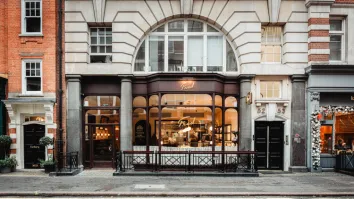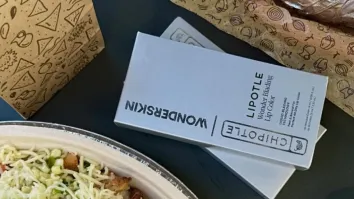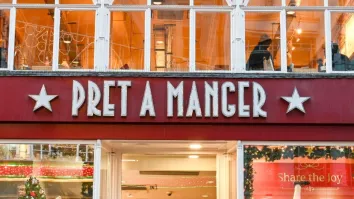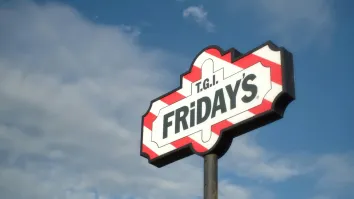10 tips on what consumers look for in a restaurant: the ENTERTAINER
Written by Mike Rich, global marketing director of the ENTERTAINER.
Competition on the high street is fierce. Savagely so in the hospitality sector. Consumers have more choice than ever before when deciding where to eat and drink out of home. But reality also bites: household income in the UK fell by 1.4% in the first three months of 2017, following declines of 0.3% in the third quarter of 2016 and 0.4% in the last three months of the year. Consumers are therefore understandably cautious about spending their hard-earned money on what could be a bad experience. It is a battle to win the business and stay on top.
Here are 10 top tips for operators looking to encourage that all-important footfall through the door:
1. “I can resist anything except temptation…”
We are not yet in a place where all operators are actively driving loyalty and as such, many are missing a trick. Offers, such as buy-one-get-one-free, inspire consumers to try new places, dishes and drinks that they otherwise might not have, remaining the best incentive to encourage loyalty and enhance that bottom line. Acquiring customers is the first step to building loyalty. Temptation is therefore key.
2. Catch the wave
Despite the fall in household income, consumers are making a discernible effort to do more with less. Earlier this year, a report by the Office for National Statistics revealed that Britons spend more than £45 a week on restaurants and hotels – their highest in five years, reflecting a rise in actual disposable income and increasing rates of employment. Dining out is becoming a way of life in the UK and is no longer just for special occasions. Consumers are looking for enjoyment in experiences and this is an opportunity for the restaurant sector to step up.
3. Get the basics right
The key influences on deciding where to eat out shine a light on two basic types of customer for restaurant operators. There are those who find a place they like and stick to it. Then there are those who like to explore, always looking for a new experience. The latter are usually guided by word-of-mouth and social media referrals. In either case, once you have them over the threshold, there are two factors that will decide whether or not this is going to turn into repeat business. The first is a positive experience – from both a hospitable environment and the actual service. The second is the food and drink. Quality and taste are paramount and will keep them coming back. Just make sure they talk about it too.
4. Be relevant
Probably one of the most significant innovations of recent times is the rise in importance of relevance. Today, it’s all about data and the ability to analyse it. It’s about understanding how consumers think, what they do and when they do it. It’s also about what they like, when to speak to them and what to say. The more personal, the better! This is the key to higher engagement. Operators who can capture these golden nuggets of information about their customers will be more able to identify them, reach them and communicate with them. Don’t make the mistake of trying to be everything to everyone. Define the target demographic and go for it, using data to support these choices. Consider three fundamentals: location, menu and price.
5. Download increases uptake
We live in a modern age and therefore, consumers expect a modern experience. Gone are the days of fearing being seen in public using a paper voucher or coupon. Hello, digital world! Through a loyalty app, for example, consumers can use digital discounts and have a seamless, branded experience, saving their money and their street cred at the same time. The operator also benefits, knowing which customer has downloaded offers and therefore who should be due in.
6. If not now then when?
It is important to place as little restriction on offers as possible and to make discounts redeemable as often as possible on as many days and at as many times of day as an operator can afford. So many discount-based companies sell offers with just as many restrictions in the small print and these can be counter-productive. If a customer fails to read the conditions and is disappointed or ends up receiving a bad experience from an operator, you can be sure they won’t be back.
7. Leave time for the show
Driving footfall through offers and incentives frees up front-of-house staff to do what they do best – providing a great experience. Without the need to sell the operation and the menu offers upfront to so many potential customers, front-of-house teams have more time to deliver a fantastic experience that leaves customers wanting more.
8. Be ready for your close-up
With the rise of digitalisation, consumers have become tech-savvy and usually look to their smart phones and Google for answers to just about anything – even when they should be eating. It is up to operators to be ahead of the game in what customers are asking to ensure they stay front of mind and remain relevant. For example, if you’re seeing more consumers in for breakfast, focus on your breakfast offer: make your customers talk about it on their social media feeds, recommending it, posting pictures of it and rating you well on search engines. Then market your breakfast to the outside world, inviting bloggers to try it out and get your dishes on the “Top 10 Breakfasts” lists.
9. Face the future
Be prepared for what’s coming. There’s no doubt that virtual reality (VR), bots and big data will continue to grow. VR will become a key part of content strategy, big data will be available faster and bots will be the new normal. As a result, operators will glean a better understanding of consumer behaviour and be able to respond with experiences that are more personalised. Take websites – they will move towards personalisation to each visitor. Equally, interactive emails and strong imagery will be a must for operators to get ahead of the competition and climb the ranks on Google.
10. The bigger picture – it’s not just prices
A combination of both incentives and a great experience are what will find a customer and then keep them coming back. Consumers don’t mind paying more if they believe the experience is worth it. In fact, 45% say they would pay more for a better customer experience. But while price is important to consumers, for operators, competing on that aspect alone won’t grow revenue or market share. Remember the bigger picture and the complete experience. An operator’s job isn’t done when customers come in, you still have to convince them to come back.
For further information, please visit www.theentertainerme.com.



























